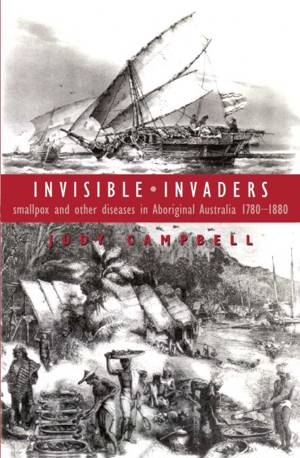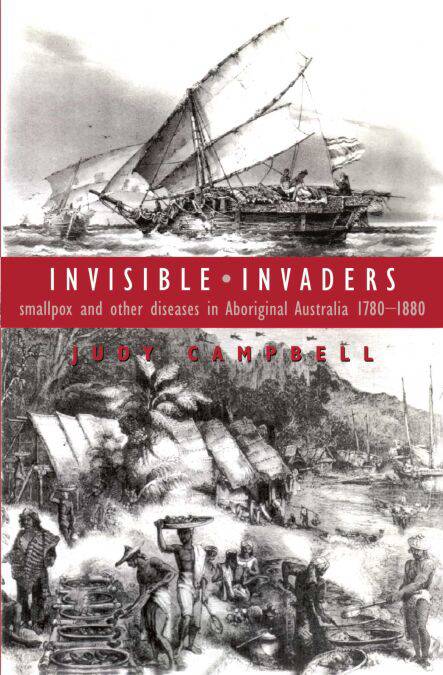
- Afhalen na 1 uur in een winkel met voorraad
- Gratis thuislevering in België vanaf € 30
- Ruim aanbod met 7 miljoen producten
- Afhalen na 1 uur in een winkel met voorraad
- Gratis thuislevering in België vanaf € 30
- Ruim aanbod met 7 miljoen producten
Zoeken
Invisible Invaders E-BOOK
Smallpox and other diseases in Aboriginal Australia 1780-1880
Judy Campbell
E-book | Engels
€ 21,80
+ 21 punten
Omschrijving
An epidemic of smallpox among Aboriginal people around the infant colony of Sydney in 1789 puzzled the British, for there had been no cases on the ships of the First Fleet. Where, then, did the epidemic come from?
As explorers moved further inland, they witnessed other epidemics of smallpox, notably in the late 1820s and early 1830s and again in the 1860s and 1870s. They also encountered many pockmarked survivors of early epidemics.
In Invisible Invaders, Judy Campbell argues that epidemics of smallpox among Australian Aboriginals preceded European settlement. She believes they originated in regular visits to the northern coast of Australia by Macassan fishermen from southern Sulawesi and nearby islands. They were searching for trepang, for which there was a profitable market in China.
The Macassan fishermen usually visited during the monsoon season, and the local Indigenous people traded with them. Once the monsoon was over, these Aboriginals resumed their travels into the interior for food, social contact and ritual events, carrying small pox with them. Smallpox thus slowly moved across the continent, eventually reaching the south-east, where it was first recorded by Europeans.
Judith Campbell's research on the incidence of smallpox and other diseases among Aboriginal people has extended over more than twenty years. Accumulating evidence from other disciplines supports her findings.
As explorers moved further inland, they witnessed other epidemics of smallpox, notably in the late 1820s and early 1830s and again in the 1860s and 1870s. They also encountered many pockmarked survivors of early epidemics.
In Invisible Invaders, Judy Campbell argues that epidemics of smallpox among Australian Aboriginals preceded European settlement. She believes they originated in regular visits to the northern coast of Australia by Macassan fishermen from southern Sulawesi and nearby islands. They were searching for trepang, for which there was a profitable market in China.
The Macassan fishermen usually visited during the monsoon season, and the local Indigenous people traded with them. Once the monsoon was over, these Aboriginals resumed their travels into the interior for food, social contact and ritual events, carrying small pox with them. Smallpox thus slowly moved across the continent, eventually reaching the south-east, where it was first recorded by Europeans.
Judith Campbell's research on the incidence of smallpox and other diseases among Aboriginal people has extended over more than twenty years. Accumulating evidence from other disciplines supports her findings.
Specificaties
Betrokkenen
- Auteur(s):
- Uitgeverij:
Inhoud
- Aantal bladzijden:
- 296
- Taal:
- Engels
Eigenschappen
- Productcode (EAN):
- 9780522865110
- Verschijningsdatum:
- 17/10/2016
- Uitvoering:
- E-book
- Beveiligd met:
- Adobe DRM
- Formaat:
- ePub

Alleen bij Standaard Boekhandel
+ 21 punten op je klantenkaart van Standaard Boekhandel
Beoordelingen
We publiceren alleen reviews die voldoen aan de voorwaarden voor reviews. Bekijk onze voorwaarden voor reviews.











